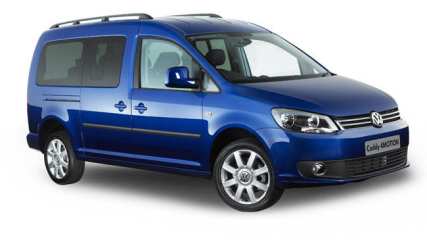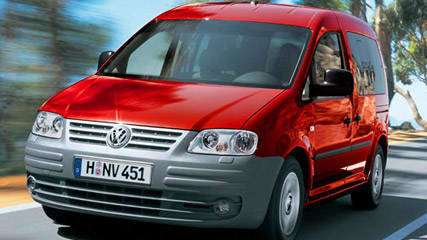Volkswagen Caddy 2012 Review
By Allison Garoza · 21 Nov 2012
You hate heavy cargo vans but you need something bigger than a car, you think the VW Caddy Van is perfect, but its cargo area is just a tad too small. Well, supersize the Caddy and VW’s got your solution - the Caddy Maxi Van.With a longer wheelbase, the Maxi provides all the basics of the regular Caddy, but with that extra bit of space to get your business on the road, all in an easy-to-handle vehicle.VALUEThe seven-speed DSG, TDI250 Caddy Maxi Van arrives ready for work for $30,990, including ESP, ABS, ASR, MSR, EDL, Hill Hold Assist, climatic air conditioning, steel wheels, full size spare, three-year unlimited km warranty, aux input socket, and cruise control.TECHNOLOGYThe two-seater Caddy Maxi Van TDI250 has a four-cylinder DOHC 16-valve engine that produces 75kW and 250Nm. Front wheel drive, seven-speed DSG transmission and sharp handling, the Maxi also has an impressive official fuel combined of 5.8/100km (we found 7.7/100km on our mostly urban drive).DESIGNThe Caddy Maxi lends itself to the demands of your business. Dual sliding and rear wing doors give easy access to your goods, while the large cargo space lets you customize the Caddy for any load. From carrying delicate flowers to rambunctious dogs, the Caddy is ready to serve. The longer wheelbase jumps the cargo load space to 2.25metres in length, with a volume of 4.2 cubic metres and an 800kg payload.Externally there’s not a lot of design, but that’s on purpose. The vehicle is perfect for signage, so no matter how convoluted your company name, it’ll be sure to fit. Seats are comfortable with height adjustment and under seat storage. Additional storage overhead, storage pockets along the dash, and plenty of cup holders provide room for all sorts of loose gear.The best thing about the Caddy design is the range of options. You can choose the window package for up to four side windows (which will help with those side blind spots), a rubber cargo floor (which will cut down on cabin noise), cargo barrier, and roof rails, to name a few.SAFETYDriver and front passenger airbags, ESP, ABS, ASR, MSR, EDL, Hill Hold Assist, and an electronic engine immobiliser all come standard, and we suggest the optional cargo barrier to keep your goods from becoming bads in the case of a collision.DRIVINGThe sun is shining, you hear the wind dance around you, and it’s almost peaceful, except that you’re not lounging in a meadow, but driving a vehicle down the motorway. Without a covering on the cargo floor, prepare for a loud cabin, as you’ll hear the road, the wind, and disconcertingly, the sloshing fuel tank.Electro-mechanical power steering lets the Caddy steer more like a car than a van, and the seven-speed DSG lets you worry about other things, like your portfolio, rather than shifting. If you don’t mind shifting, the manual version is a lot smoother to drive, as the automatic doesn’t change gears with the same grace as VW’s other DSG vehicles.With Maxi’s Independent McPherson struts on the front axle, and rigid rear with Leaf Springs in back, the Caddy is comfortable for the driver, but if you’re going to have over 250kg payload fitted to your vehicle, you may want to opt for the suspension upgrade. Despite the cabin noise and side blind spots, VW’s Caddy Maxi Van fits the bill in providing a base for small business owners to customize their optimal vehicle. VERDICTVersatile, comfortable to drive, and filling the niche for business owners, the VW Caddy Maxi is ready to join the staff as most valued employee.Volkswagen Caddy Maxi Van TDI250Price: from $30,990Warranty: 3 years/unlimited kmSafety rating: n/aEngine: 1.6-litre 4-cyl diesel 75kW/250NmTransmission: 7-speed auto; FWDBody: 4876mm (L); 1794mm (w); 1836mm (h)Weight: 1459kgThirst: 8.8L/100km; 152g/km CO2









